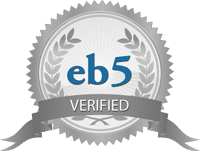The Exchange of a Condo for an EB-5 Visa: Important Warning to EB-5 Investors

In today’s EB-5 landscape, individuals are usually seeking EB-5 projects that are likely to return their capital to them when their EB-5 process is over. Many investors will choose a “loan-based” project which allows their funds to be pooled together into a special purpose vehicle (“SPV”) and then loaned to a developer. Traditionally, this has meant that the loan issued by the SPV, or (as termed by USCIS) new commercial enterprise or NCE, will be backed at some level by a hard asset such as real estate. With this in mind, some developers are proposing to provide the hard asset itself, i.e. real estate, directly to an EB-5 investor. This article discusses a “newfound” and dangerous trend that has reemerged in the Florida EB-5 investor market.
On July 23, 2012, the USCIS terminated the designation of the Lake Buena Vista Regional Center (“LBVRC”),[1] after initially issuing the regional center a Notice of Intent to Terminate (“NOIT”) [2] on December 19, 2011. In the NOIT and Notice Of Termination, USCIS found the following troubling issues:
Issue #1. “The regional center project is essentially a real estate transaction as opposed to a job creating capital investment vehicle because the NCE is an intermediary that will subsequently deed the property to the EB5 immigrant investors.”[3]
Issue #2. “The AAO correctly noted that investment in developed real estate for rental purposes or occupancy does not qualify as an investment in a commercial enterprise per 8 CFR 204.6(e).”
Issue #3. “Redemption Agreements are impermissible per Matter of Izummi.”
While the Notice Of Termination found that these above issues were resolved by LBVRC, it made the following distinctions for each issue:
USCIS Comment #1. “The units will be owned by the EBS/LBV LLC and there is no guarantee that the investors will receive the units upon closing. Further, the units may not be occupied and used as a permanent residence.” (Emphasis added.)
USCIS Comment #2: The “…NCE is purchasing real estate from Developer as a customer and not the individual investors. In addition, the individual investors will no longer receive the units later as part of the exit strategy for their investment.” (Emphasis added.)
USCIS Comment #3. The NCE “…removed the clause providing for the redemption of units [in their offering documents] to the investors upon closing. However, the usage rights clauses referenced therein have not changed… [and] the usage rights applied to the Company but not the individual investors”. (Emphasis added.)
What is surprising to this writer is that current EB-5 projects are offering investments which appear to contravene Izummi and USCIS Policy. The LBVRC example illustrates that offering investors a “deed upon closing” or some “usage rights” to the real estate assets will be a form of a redemption agreement and, thus, impermissible.
The USCIS policy seems to be clear. As noted in its USCIS Policy Manual, it terms a “guaranteed return” to include “…the right to eventual ownership or use of a particular asset in consideration of the investor’s contribution of capital into the new commercial enterprise…”.[4] USCIS further explains that “…the expected present value of the guaranteed ownership or use of such asset will count against the total amount of the investor’s capital contribution in determining how much money was placed at risk.” (Emphasis added.) As noted by USCIS, if the present value of the condominium, usage rights, or real estate asset that is provided to the EB-5 investor has any dollar amount, it would essentially have the effect of lowering the required minimum investment for the EB-5 investor.[5] Since nearly all EB-5 applicants investing in EB-5 projects are contributing $500,000, the effect of simply a $1 decrease in their required at risk amount will cause them to have their EB-5 petitions denied, or worse have their green cards become revocable. As also noted by the USCIS Policy Manual:
“Nothing prevents an immigrant investor from receiving a return on his or her capital in the form of a distribution of profits from the new commercial enterprise. This distribution of profits may happen during the conditional residency period and may happen before creating the required jobs. However, the distribution cannot be a portion of the investor’s minimum qualifying investment and cannot have been guaranteed to the investor.”
If a real estate usage rights or property is exchanged for by the investor in return for their permanent residency, then it will have to be derived from a distribution of net profits, and not based upon their capital contribution.
This is more troubling that EB-5 projects, including those in South Florida, are being marketed by developers and their real estate brokerages in the following problematic fashion. As reported to this author by other immigration lawyers, selling and buying agents, as well as investors, the investment plan would allow part or all of an EB-5 investment of $500,000 to be applied toward the condo purchase price at today’s present value. For example, if an EB-5 investor were purchasing a condo unit for $600,000, the investor would then need to make an additional deposit of $100,000 as payment for the condo unit. The sellers of the real estate would then utilize the investor’s $500,000 contribution at the end of their conditional residence to conclude the closing of the condominium unit. The EB-5 investors are also told that they will receive usage rights to the condominium or real estate asset annually while they are a conditional permanent resident.
What is additionally worse is that it is also reported that the EB-5 investors are being provided “side agreements” which are not being included with the initial I-526 petitions. The EB-5 investors would also need to be advised or disclosed the potential risk of such side agreements in their Private Placement Memoranda or PPM’s. Furthermore, also problematic is that USCIS may not have been informed about these potentially redemption, violative, real estate transaction clauses in the side agreements and may be grounds for misrepresentation by the EB-5 project filers or investors. Whether the real estate brokerages (and the hundreds of agents employed by them) that are contracted by the EB-5 developers are engaged in the selling of real estate investments is to be questioned by whether or not of agents are receiving commissions for the sale of real estate based on the present value of the real estate, or a future value. As well, are any payments investment-based compensation, which would make the real estate commissions subject to SEC and FINRA-regulated finder fees rules.
The recommendation to potential EB-5 investors is that utilizing part or all of your EB-5 capital contribution as a means of securing a future benefit of real estate in the name of the EB-5 investor may likely be a violation of USCIS long-standing precedent decisions and current policy. Any benefit, including what may be deemed to be an intangible benefit such as usage rights, perhaps even a preferable timeframe to finalize a real estate closing, may endanger an EB-5 investment.
[1] See https://www.uscis.gov/sites/default/files/files/nativedocuments/Lake_Buena_Vista_Regional_Center.pdf, last viewed on November 29, 2018.
[2] For IIUSA members only, see http://member.iiusa.org/system/files/attachments/2011-12-19%20LBV%20%28NOIT%29.pdf.
[3] See Footnote 1.
[4] See https://www.uscis.gov/policymanual/HTML/PolicyManual-Volume6-PartG-Chapter2.html, last viewed on November 29, 2018.
[5] USCIS says in its manual, “For example, if the immigrant investor is given a right of ownership or use of real estate, the present value of that real estate will not be counted as investment capital put at risk of loss.”














